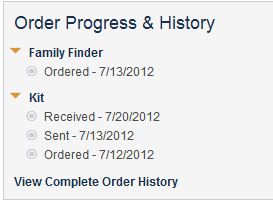The 1766 Religious Census is an important source for Irish research. It actually covered a very small segment of the population, but because of heavy record loses in Ireland is important to consult. It looks like my ancestors were part of the lucky few recorded on it. Only a transcription is available at
ancestry.com. The original is housed at the
National Archives in Dublin. Many of the original pages are missing. I lucked out again in the fact that Creggan Parish lists survive.

I decided it would be best to have a copy of the original. It is always important to use the best source which would be the original. When I tracked down the location of the original at the National Library I sent an email to them requesting instructions on how to order a copy and the cost. The cost was reasonable $3.30 or 2.60 Euros. I forgot to ask about what form of payment would be acceptable to them. Since it takes a while to receive an email reply I used some credits at Google Voice to call them. Had a little trouble getting the call to go through. I found out you have to leave out the city code in the number. I was told a bank draft in the form of Euros or an international postal money order would be acceptable. I was also directed back to their website where there were similar instructions ( I could not find this page when I looked the first time).
These instructions seemed reasonable and doable. I immediately consulted the US Postal service website to find out how to go about getting an international money order. I soon found out that these money orders could only be cashed in a few mainly third world countries. I Ireland was not on the list of countries which accepted these. So I then turned to my bank asking if I could get a Euro Bank draft. The Chase customer service person was very confused by my request. After waiting on hold a few minutes I was told that a cashiers check would be the same thing. No actually it would not. The Archives wanted payment in Euros and the cashiers check would be made out in Dollars. I contacted and visited several local banks asking about how I might be able to get Euros to Ireland at a reasonable price. I had been told about electronic transfers which were expensive, over $40. I was not willing to pay over $10 to get a record which cost $3.00 or 2.60 Euros. No one had any idea how to do that. One person did think that a regular money order could be easily cashed in Ireland, and should not present a problem for them.
This was not as easy as I hoped it would be. I did want to comply with their instructions and get some Euros over to them. I thought maybe I could just send the Euros in cash which I could buy at the bank. I didn't realize that anything under 5 euros would only be available in coins not paper money. I could have sent 5 Euros but they may feel obligated to return my change, or just not accept it at all and return it to my. The fact that the cost was so small was actually presenting problems at this point.
I did finally discover that Well Fargo had an international division. I found out that it would cost $30 to get a Euro draft from them and I would have to open an account with them. I would loved to leave Chase bank, which I hate, but $30 was out of the question.
I decided to go the the recommendation just to send a regular money order. If they accepted it that would be great, if not there was nothing else I could do.
Happily they accepted the payment and I received a large envelope from them yesterday. I got much more than I expected. I was just requesting one page, but got 7 legal size pages for all of Creggan Parish.

What immediately jumped out at me is the fact I had the County wrong. Most of those listed were in Armagh. I thought my family was in Armagh. The Forgey and Reynolds families both were located in Louth. They were among only 33 Protestants residing in Co. Louth. The other nearly 1000 people were residents of Armagh. They have these 33 people misidentified as living in Armagh at
Ancestry.com.
Sadly the exact townland they lived in is not recorded. They lived in an area described as Five Towns. No one is certain which towns were being referred to? They could be any of the 10 townlands in Creggan Parish Co. Louth.
I also don't see any other Forgeys or Reynolds amongst the nearly 1000 people on these lists. So we have a James and Andrew Forgy and Hugh Reynolds. I might deduce that the Forgy family came from Co. Down where the name was more common, and only fairly recently to 1766 migrated to that area.
Reynolds family researchers found marriage documents for their family in Dundalk Co. Louth. These families likely lived near Dundalk. Lease records may provided more info on these families.




























